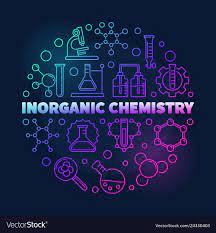What are some important topics of inorganic chemistry?
Inorganic chemistry is a branch of chemistry that focuses on the properties and behavior of inorganic compounds, which are those that do not contain carbon-hydrogen bonds. Some important concepts in inorganic chemistry include the periodic table, chemical reactions, and the behavior of ions in solution. There are also several exceptions to general trends and rules in inorganic chemistry, such as the behavior of transition metals and the different reactivity of different groups of elements.
Here are some of the most important chapters in Inorganic Chemistry for JEE:
- Chemical Bonding: This chapter is crucial for understanding the properties of different compounds and how they interact with each other.
- Coordination Compounds: This chapter is important for understanding the formation and reactivity of coordination compounds, and how they are used in various applications.
- S-Block Elements: This chapter focuses on the properties of the alkali and alkaline earth metals, and how they react with other elements.
- P-Block Elements: This chapter is important for understanding the reactivity of elements of groups 13 to 18, and how they form compounds with other elements.
- D- and F-Block Elements: This chapter is crucial for understanding the properties and reactivity of transition and inner transition elements, and their applications in various fields.
Join exprto for more such valuable informations.

[CHEMICAL BONDING AND MOLECULAR STRUCTURE]
- Kossel - Lewis approach to chemical bond formation, the concept of ionic and covalent bonds.
- Covalent Bonding: Concept of electronegativity. Fajan’s rule, dipole moment: Valence Shell Electron Pair Repulsion (VSEPR ) theory and shapes of simple molecules.
- Quantum mechanical approach to covalent bonding: Valence bond theory - its important features, the concept of hybridization involving s, p and d orbitals; Resonance.
- Molecular Orbital Theory - Its important features.
- LCAOs, types of molecular orbitals (bonding, antibonding), sigma and pi-bonds, molecular orbital electronic configurations of homonuclear diatomic molecules, the concept of bond order, bond length and bond energy.
- Elementary idea of metallic bonding.
- Hydrogen bonding and its applications.
[CLASSIFICATION OF ELEMENTS AND PERIODICITY IN PROPERTIES]
- Modem periodic law and present form of the periodic table, s, p. d and f block elements, periodic trends in properties of elements atomic and ionic radii, ionization enthalpy, electron gain enthalpy, valence, oxidation states and chemical reactivity.
[GENERAL PRINCIPLES AND PROCESSES OF ISOLATION OF METALS]
- Modes of occurrence of elements in nature, minerals, ores; Steps involved in the extraction of metals - concentration, reduction (chemical and electrolytic methods) and refining with special reference to the extraction of Al. Cu, Zn and Fe.
- Thermodynamic and electrochemical principles involved in the extraction of metals.
[HYDROGEN]
- Position of hydrogen in periodic table, isotopes, preparation, properties and uses of hydrogen
- Physical and chemical properties of water and heavy water
- Structure, preparation, reactions and uses of hydrogen peroxide
- Classification of hydrides - ionic, covalent and interstitial
- Hydrogen as a fuel.
[S -BLOCK ELEMENTS (ALKALI AND ALKALINE EARTH METALS)]
- Group -1 and 2 Elements, General introduction, electronic configuration and general trends in physical and chemical
- properties of elements, anomalous properties of the first element of each group, diagonal relationships.
- Preparation and properties of some important compounds - sodium carbonate and sodium hydroxide and sodium hydrogen carbonate
- Industrial uses of lime, limestone. Plaster of Paris and cement: Biological significance of Na, K, Mg and Ca.
[P- BLOCK ELEMENTS (Group -13 to Group 18 Elements)]
- [P- BLOCK ELEMENTS (Group -13 to Group 18 Elements)]
- General Introduction: Electronic configuration and general trends in physical and chemical properties of elements across the periods and down the groups; unique behaviour of the first element in each group.
- Groupwise study of the p - block elements Group -13, Preparation, properties and uses of boron and aluminium, Structure, properties and uses of borax, boric acid, diborane, boron trifluoride, aluminium chloride and alums.
- Group -14: The tendency for catenation; Structure, properties and uses of Allotropes and oxides of carbon, silicon tetrachloride, silicates, zeolites and silicones.
- Group -15: Properties and uses of nitrogen and phosphorus; Allotrophic forms of phosphorus; Preparation, properties, structure and uses of ammonia, nitric acid, phosphine and phosphorus halides, (PCl3. PCl5); Structures of oxides and oxoacids of nitrogen and phosphorus.
- Group -16: Preparation, properties, structures and uses of ozone: Allotropic forms of sulphur; Preparation, properties, structures and uses of sulphuric acid (including its industrial preparation); Structures of oxoacids of sulphur.
- Group-17: Preparation, properties and uses of hydrochloric acid; Trends in the acidic nature of hydrogen halides; Structures of Interhalogen compounds and oxides and oxoacids of halogens.
- Group-18: Occurrence and uses of noble gases; Structures of fluorides and oxides of xenon.
[d - and f- BLOCK ELEMENTS]
- Transition Elements: General introduction, electronic configuration, occurrence and characteristics, general trends in properties of the first-row transition elements - physical properties, ionization enthalpy, oxidation states, atomic radii, colour, catalytic behaviour, magnetic properties, complex formation, interstitial compounds, alloy formation; Preparation, properties and uses of K2Cr2O7, and KMnO4.
- Inner Transition Elements: Lanthanoids - Electronic configuration, oxidation states and lanthanoid contraction. Actinoids - Electronic configuration and oxidation states.
[CO-ORDINATION COMPOUNDS]
- Introduction to co-ordination compounds.
- Werner’s theory; ligands, co-ordination number, denticity. Chelation
- IUPAC nomenclature of mononuclear co-ordination compounds, isomerism
- Bonding-Valence bond approach and basic ideas of Crystal field theory, colour and magnetic properties
- Importance of co-ordination compounds (in qualitative analysis, extraction of metals and in biological systems).
